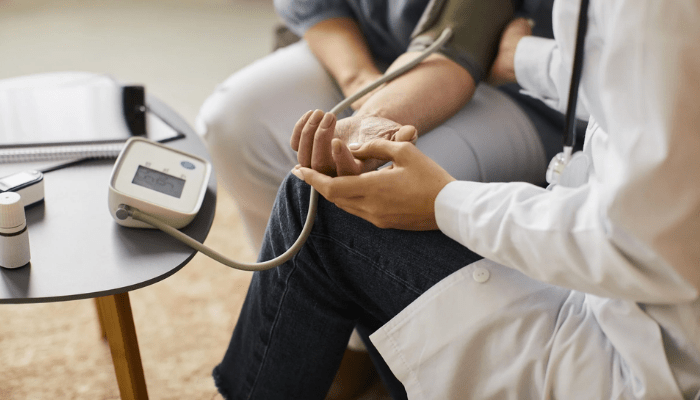High Blood Pressure: Causes, Symptoms and Treatments
High blood pressure is a health condition characterized by persistently high blood pressure in the arteries. It is one of the main causes of cardiovascular disease, including stroke and myocardial infarction, in addition to being responsible for other serious complications.
Although symptoms may be mild or even nonexistent, it is important to make an early diagnosis and adopt appropriate treatment to control blood pressure and avoid future complications.
To prevent and treat high blood pressure, it is necessary to adopt a healthy lifestyle, with a balanced diet, regular physical activity, reducing salt and alcohol consumption, quitting smoking, among other measures.
What is high blood pressure
Arterial hypertension, also known as high blood pressure, is defined as a multifactorial clinical condition characterized by persistent and chronic elevation of systolic and/or diastolic blood pressure above normal levels, which are considered lower than 120/80 mmHg. This condition is a significant risk factor for cardiovascular, renal and cerebrovascular diseases, in addition to being an important public health problem worldwide.
Among them, sedentary lifestyle, excessive salt consumption, smoking, stress, obesity and genetic predisposition stand out. In addition, there is a significant association between arterial hypertension and other clinical conditions, such as diabetes, sleep apnea, dyslipidemia and metabolic syndrome.
High Blood Pressure Symptoms;
Arterial hypertension, also known as high blood pressure, is a chronic condition that can cause several health problems, such as cardiovascular and kidney diseases. Therefore, it is important to be aware of the symptoms associated with this condition and seek medical evaluation if there are any warning signs.
Among the main symptoms of high blood pressure, the following stand out:
- Fatigue
- Difficulty concentrating
- Irritability
- Anxiety
- Insomnia
- loss of appetite
- headache
- Dizziness
- Blurry vision
- Palpitations
- Shortness of breathe
- Swelling in the ankles
- nosebleed
It is important to remember that high blood pressure can be asymptomatic in many cases, that is, it may not have visible symptoms. Therefore, it is essential to carry out regular blood pressure measurements and seek medical evaluation if there is any warning sign or risk factor for this condition.
What are the primary causes of high blood pressure and diabetes?
Primary arterial hypertension, also known as essential hypertension, is the most common form of the condition. This form of hypertension may be related to genetic, environmental and behavioral factors, and involve increased peripheral vascular resistance and/or increased cardiac output.

Among the risk factors for primary arterial hypertension, advanced age, family history, black race, obesity, sedentary lifestyle, smoking , excessive alcohol consumption and high sodium diet stand out . In addition, insulin resistance and endothelial dysfunction may also be associated with the development of primary arterial hypertension.
Treatment of diabetes and hypertension;
Mild pulmonary hypertension is a chronic condition that affects millions of people around the world. It is characterized by increased blood pressure, which can lead to serious complications such as heart disease, stroke, and kidney failure.
Now, check out a list of some treatment options for high blood pressure below:
- Complementary treatments: Relaxation techniques such as yoga and meditation can help reduce stress and anxiety, which are associated with increased blood pressure.
- Healthy Eating : A diet rich in fruits, vegetables, legumes, whole grains, lean protein, and healthy fats can help lower blood pressure.
- Physical activity : Aerobic exercise, such as walking, running, swimming and cycling, can help control blood pressure and improve cardiovascular health.
- Blood pressure monitoring : measuring blood pressure regularly, either at home or in the doctor’s office, can help identify high blood pressure and assess the effectiveness of treatment;
- Medications : There are several types of medications that can be prescribed to control high blood pressure, such as diuretics, beta blockers, calcium channel blockers and angiotensin-converting enzyme (ACE) inhibitors.
When is hypertension considered dangerous?
Understanding when high blood pressure is considered dangerous is essential to preventing serious complications. In general, blood pressure is considered high when values are above 140/90 mmHg.
When high blood pressure is not properly controlled, it can lead to progressive damage to vital organs such as the heart, brain and kidneys, increasing the risk of cardiovascular disease and serious complications. Therefore, it is essential that patients with high blood pressure follow the treatment prescribed by the doctor and regularly monitor their blood pressure in order to prevent or control possible complications.

Deixe um comentário